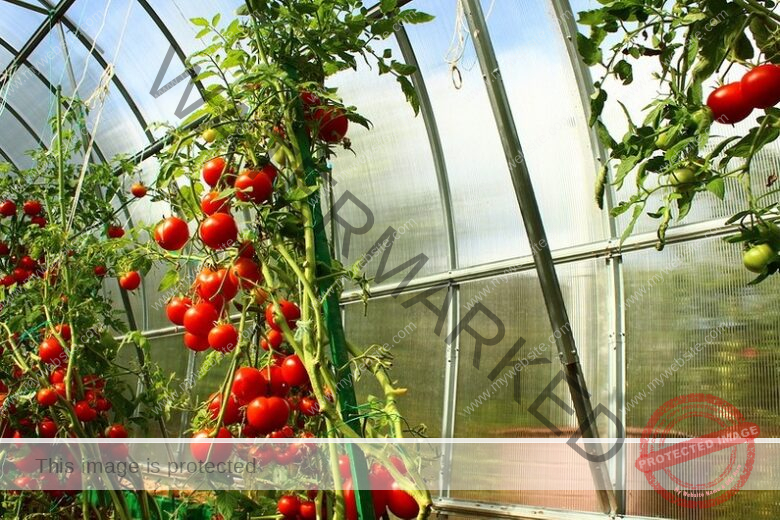Here is the ultimate guide on the 12 best agronomic practices of oil palm! If you are a seasoned oil palm grower or a beginner looking to venture into this lucrative industry, this comprehensive guide will provide you with valuable insights and expert advice.
Oil palm cultivation requires careful attention to various agronomic practices to ensure optimal growth, maximum yield, and long-term success. By implementing these best practices, you can enhance the productivity of your oil palm plantation and achieve sustainable results. Let’s dive in!
12 Best Agronomic Practices of Oil Palm [Oil Palm Success Guide]
1. Site Selection and Preparation
To kickstart your oil palm success journey, selecting the right site and preparing it properly is crucial. Look for areas with well-drained soil, preferably loamy or sandy, with good water-holding capacity. Avoid sites prone to waterlogging or flooding.
Conduct soil tests to assess its fertility and suitability for oil palm cultivation. Clear the land of any vegetation, including stumps, rocks, and weeds, and level it to ensure uniform growth.
Read Also: [Beginners guide] How to Successfully Grow Palm Trees from Seeds
2. Variety Selection
Choosing the right oil palm variety is essential for maximizing yield and profitability. Consider factors such as disease resistance, adaptability to local conditions, and market demand when selecting a variety.
Popular oil palm varieties include Tenera, Dura, and Pisifera. Consult with local agricultural experts or extension officers to determine the most suitable variety for your specific location.
3. Seed Selection and Germination
Obtaining high-quality seeds is crucial for establishing a productive oil palm plantation. Select seeds from reputable nurseries or certified suppliers to ensure genetic purity and vigor. Prioritize seeds that exhibit desirable traits such as high oil content, good fruit quality, and disease resistance. Implement proper seed treatment and germination techniques to enhance seedling establishment and vigor.
Read Also: [Success Tips] How to become a Farmer in Scotland
4. Planting Techniques
Adopting appropriate planting techniques is vital to promote healthy growth and optimize yield. Plant oil palm seedlings at the right spacing to allow sufficient sunlight penetration and airflow. Typically, a spacing of 9 meters by 9 meters is recommended.
Dig proper planting holes, ensuring the depth matches the seedling’s root system. Backfill the holes with fertile soil and create a small mound around the seedling to facilitate water retention.
5. Fertilization
Implementing a well-planned fertilization program is crucial for providing essential nutrients to oil palm trees. Conduct regular soil tests to determine nutrient deficiencies and tailor your fertilizer application accordingly.
Read Also: [Success Tips] How to become a Farmer in Northern Ireland
Use a balanced fertilizer with the appropriate ratio of nitrogen (N), phosphorus (P), and potassium (K) to support optimal growth and fruit production. Consider using organic fertilizers to enhance soil fertility and promote sustainable practices.
6. Water Management
Proper water management plays a pivotal role in oil palm cultivation. Irrigate the plantation effectively to meet the water requirements of the trees, especially during dry spells. Implement efficient irrigation systems, such as drip irrigation, to minimize water wastage and ensure targeted delivery to the root zone. Adequate water supply promotes healthy growth, prevents moisture stress, and enhances oil palm productivity.
7. Weed Control
Weeds can compete with oil palm trees for nutrients, water, and sunlight, hampering their growth and productivity. Implement an effective weed control strategy to keep the plantation weed-free. Utilize pre-emergent herbicides, manual weeding, or mechanical methods to manage weed growth.
Read Also: [Success Tips] How to Become a Farmer in Wales
Regular monitoring and timely intervention are essential to minimize the weed population and maintain a clean planting area.
8. Pest and Disease Management
Protecting oil palm trees from pests and diseases is critical to ensure their long-term health and productivity. Identify common pests and diseases that affect oil palm, such as bagworms, red palm weevils, and basal stem rot.
Implement integrated pest management strategies, combining cultural, biological, and chemical control methods. Regular scouting, early detection, and prompt treatment are key to effectively managing pest and disease outbreaks.
9. Pruning and Crown Management
Pruning is an essential practice to maintain the overall health and shape of oil palm trees. Remove dead fronds, inflorescences, and any diseased or damaged parts regularly. Pruning promotes better air circulation, reduces pest and disease incidence, and improves light penetration into the canopy.
Also, implement crown management techniques to prevent excessive crown height and enhance harvesting efficiency.
10. Harvesting and Bunch Handling
Harvesting oil palm fruit bunches at the right maturity stage is crucial to obtain optimum oil yield and quality. Train harvesters to identify ripe bunches based on specific indicators such as fruit color, looseness of fruit attachment, and ease of detachment.
Handle harvested bunches carefully to prevent damage and minimize oil losses. Prompt transport and processing of the fruit bunches ensure the preservation of their quality.
11. Mulching
Applying mulch around the base of oil palm trees offers numerous benefits. Mulching conserves soil moisture, suppresses weed growth, regulates soil temperature, and improves soil structure. Use organic materials such as palm fronds or empty fruit bunches as mulch.
Apply a layer of mulch around the tree base, taking care not to heap it against the trunk. Regularly replenish the mulch layer to maximize its effectiveness.
12. Replanting and Crop Rotation
To ensure the long-term sustainability of your oil palm plantation, proper replanting and crop rotation strategies are essential. Replant aging or unproductive trees with new seedlings to maintain optimal productivity.
Consider crop rotation with leguminous cover crops or intercropping with compatible plants to improve soil fertility, control pests, and diversify income sources. A well-planned replanting and rotation strategy promotes a healthier and more profitable oil palm plantation.
How long does it take for an oil palm tree to mature?
Oil palm trees typically take around 2 to 3 years to mature and start producing fruits. However, it may take up to 4 to 5 years for the trees to reach full production capacity.
Can oil palm be grown in areas with limited rainfall?
Oil palm requires a consistent water supply for optimal growth and productivity. While it can tolerate moderate drought conditions, areas with limited rainfall may not be suitable for cultivating oil palm. Adequate irrigation systems should be in place to compensate for insufficient rainfall.
Is organic farming possible in oil palm cultivation?
Although organic farming practices are challenging to implement in large-scale oil palm plantations, certain organic principles can be integrated. These include the use of organic fertilizers, minimal pesticide usage, and promoting natural pest control through biological agents.
How often should I fertilize my oil palm trees?
Fertilization frequency depends on various factors such as soil fertility, tree age, and nutrient requirements. Typically, oil palm trees are fertilized 3 to 4 times a year. However, regular soil tests are crucial to determine the specific nutrient needs and adjust the fertilization schedule accordingly.
Are there any specific diseases that affect oil palm?
Yes, oil palm is susceptible to various diseases, including basal stem rot, fusarium wilt, and bud rot. Regular monitoring, early detection, and appropriate disease management practices are vital to prevent severe damage to the plantation.
What are the major export markets for palm oil?
The major export markets for palm oil include countries such as India, China, European Union countries, and Indonesia. These regions have high demand for palm oil in various industries, including food processing, cosmetics, and biofuel production.
Conclusion
Implementing the 12 best agronomic practices of oil palm is crucial for achieving success and profitability in this industry. From site selection and preparation to harvesting and replanting, each practice plays a vital role in optimizing yield and ensuring long-term sustainability.
By following these practices and staying updated with the latest advancements in oil palm cultivation, you can overcome challenges and reap the rewards of a thriving oil palm plantation. Remember to adapt these practices to your specific location and seek guidance from local agricultural experts for the best results. Happy growing!




